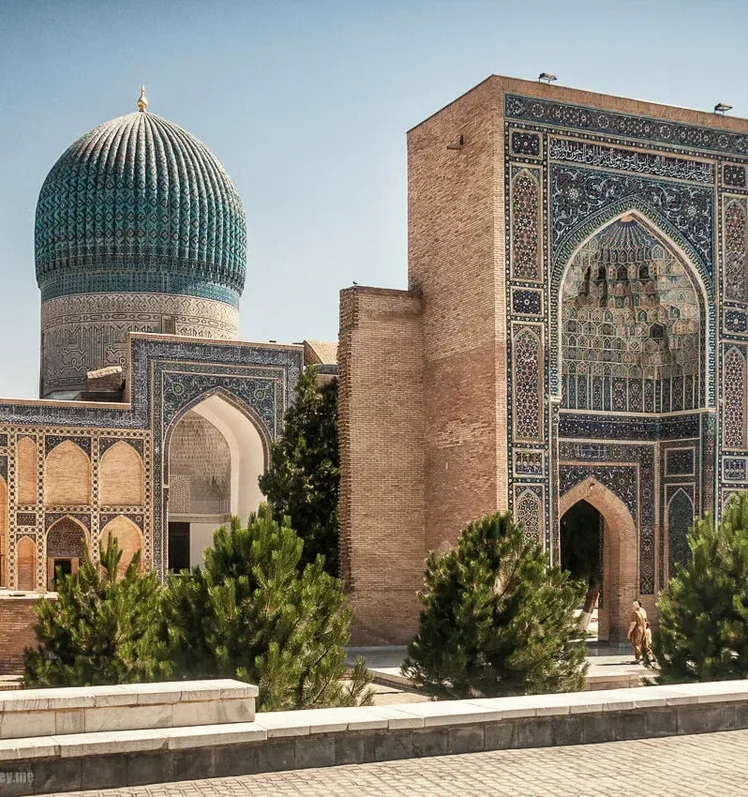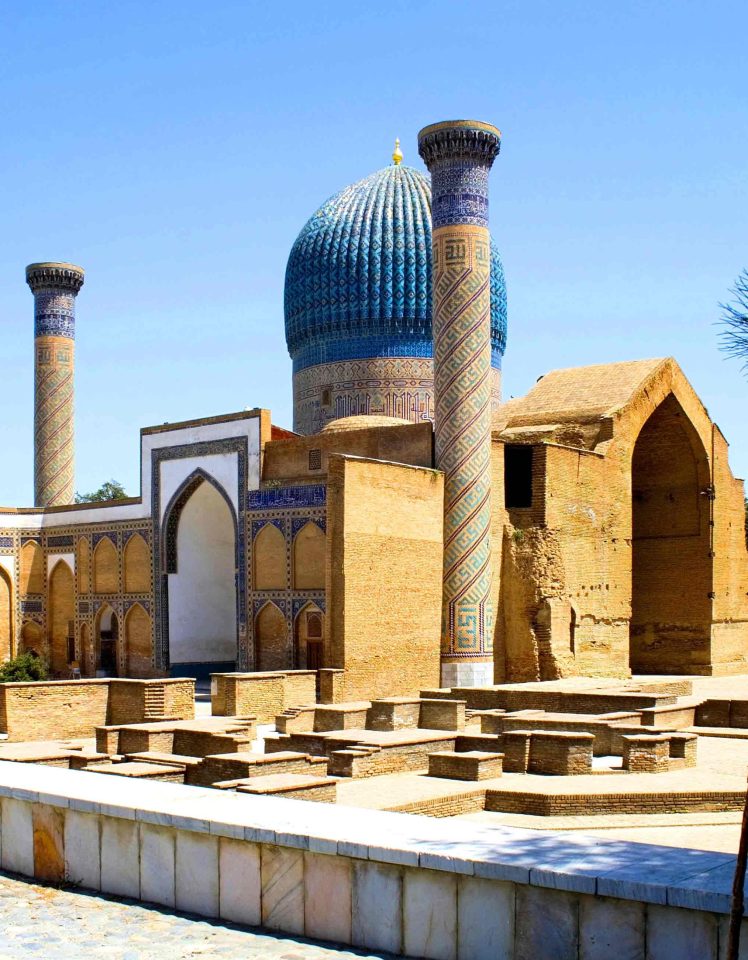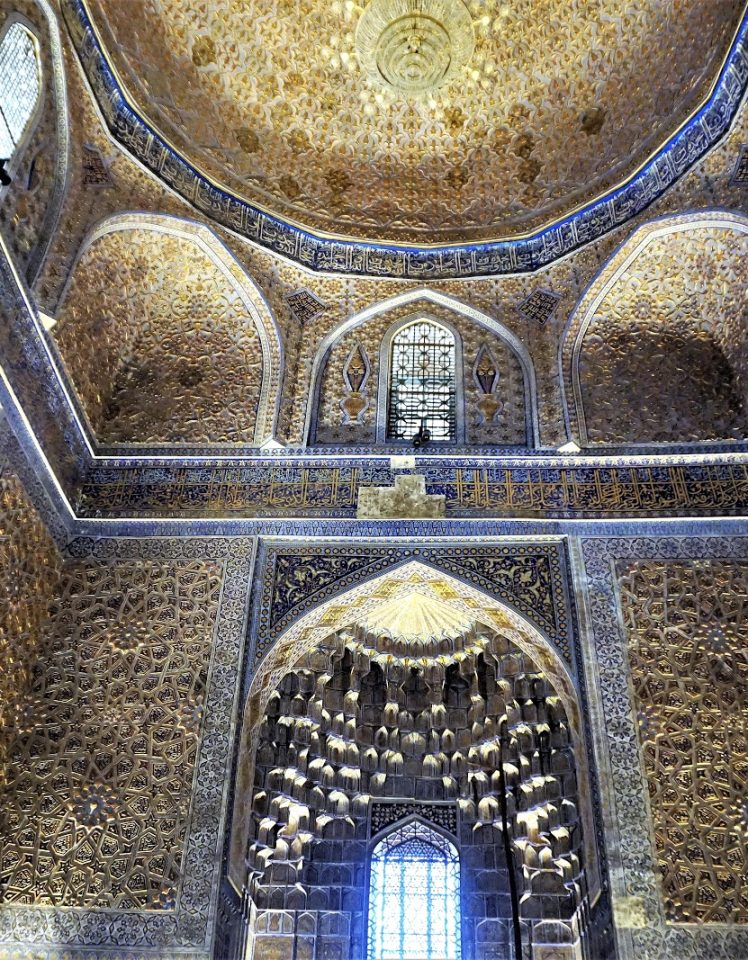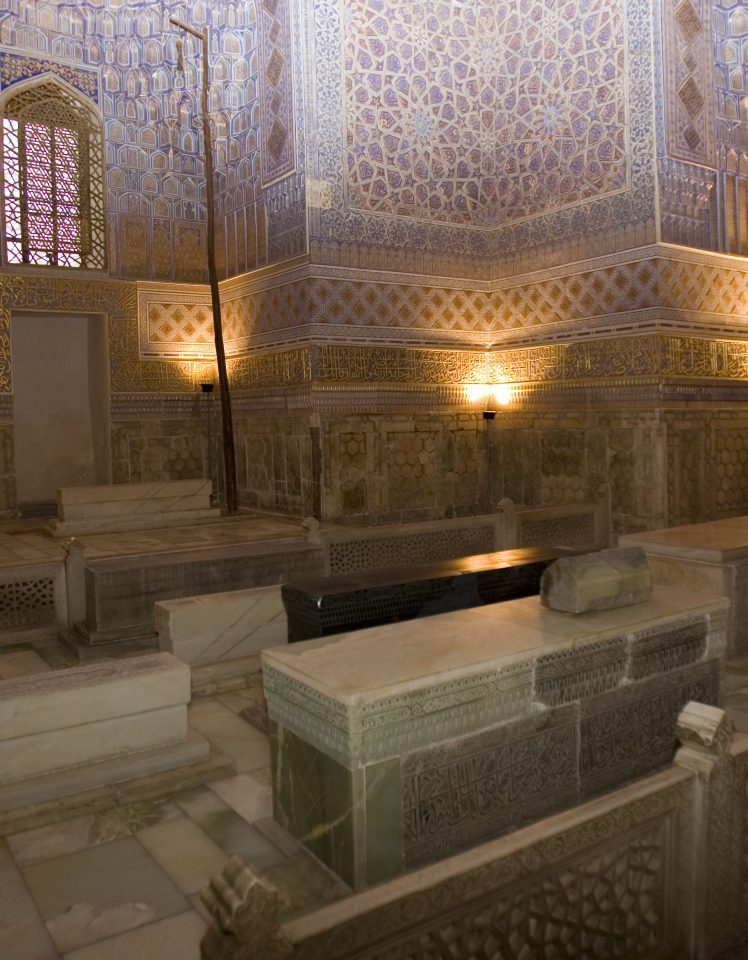Gur-e-Amir, also known as the “Tomb of the King” or “Tomb of the Ruler,” is a magnificent mausoleum of the Timurids and an unparalleled architectural masterpiece of Central Asia. It is the eternal resting place of Amir Timur, his sons Shahrukh and Miranshah, grandsons Muhammad Sultan and the great astronomer Ulugh Beg, as well as the spiritual mentor Mir Sayyid Bereke and Shah-Hoja.
Jeep tours from Bishkek offer a unique opportunity to visit this historical artifact.
Construction of the mausoleum began by the order of Tamerlane in 1403 on the site of an ensemble erected by Prince Muhammad Sultan in the 14th-15th centuries in the southeast of Samarkand. Initially, this complex was intended as a center of Islamic education, but after the death of Muhammad Sultan, Timur transformed it into a mausoleum.
Gur-e-Amir is surrounded by many mysterious legends, one of which is associated with the gravestone on Amir Timur’s tomb. In 1740, the dark-green jade stone was taken by the Iranian conqueror Nadir Shah, but soon misfortunes befell the ruler and his subjects. After many entreaties, the stone was returned, but it split into two pieces.
In June 1941, the government of Uzbekistan decided to open the tomb in Gur-e-Amir. Archaeologists discovered the mummified remains of men from the Timurid dynasty, including Amir Timur. It was established that Timur was a giant among men of his time and walked with a pronounced limp. However, shortly after the mausoleum was opened, the Great Patriotic War began, sparking much debate about the possible curse of Tamerlane.
Access the Gur-e-Amir (Mausoleum of Timur) (clickable link).








